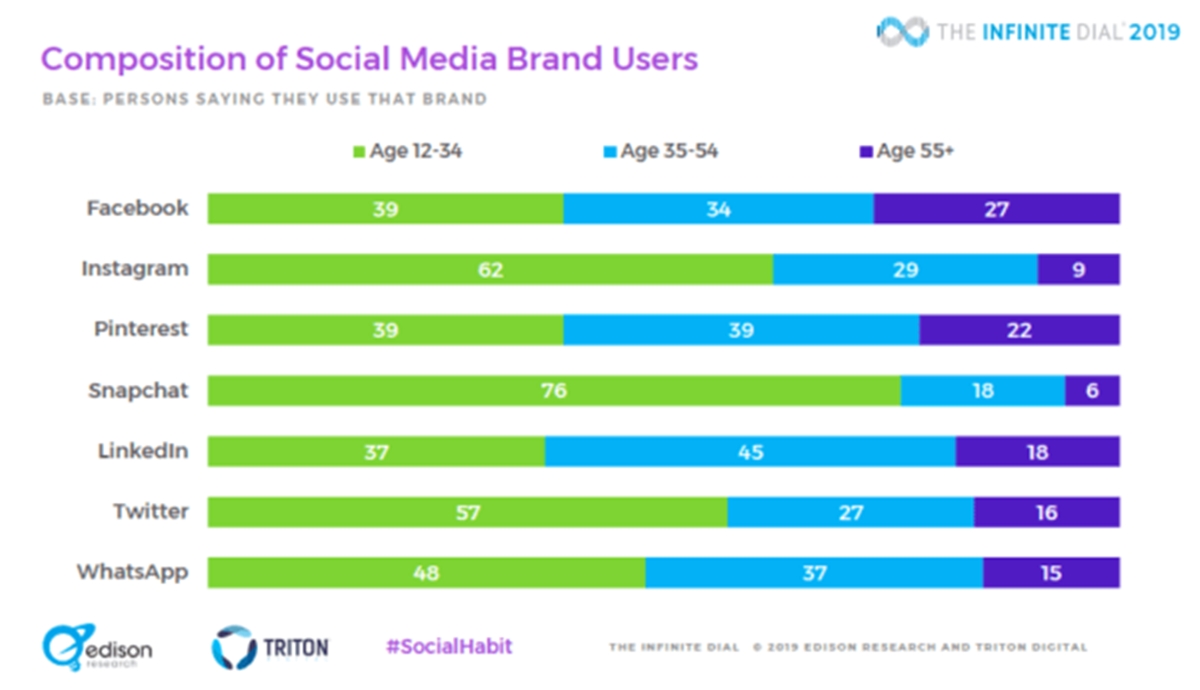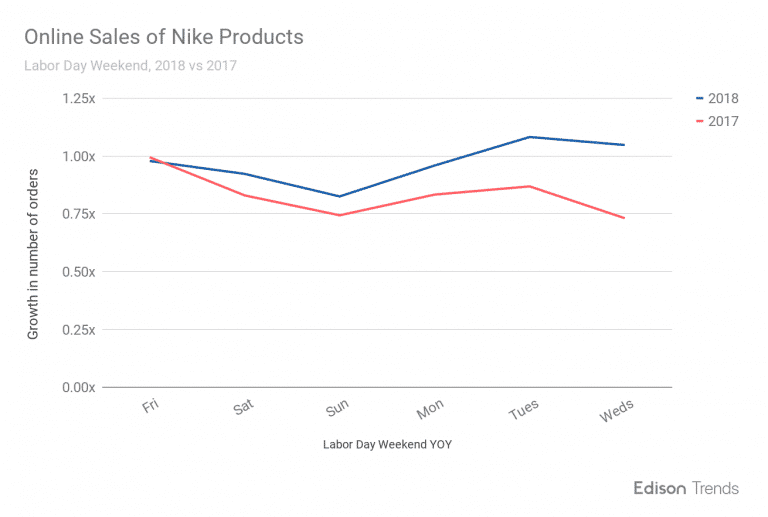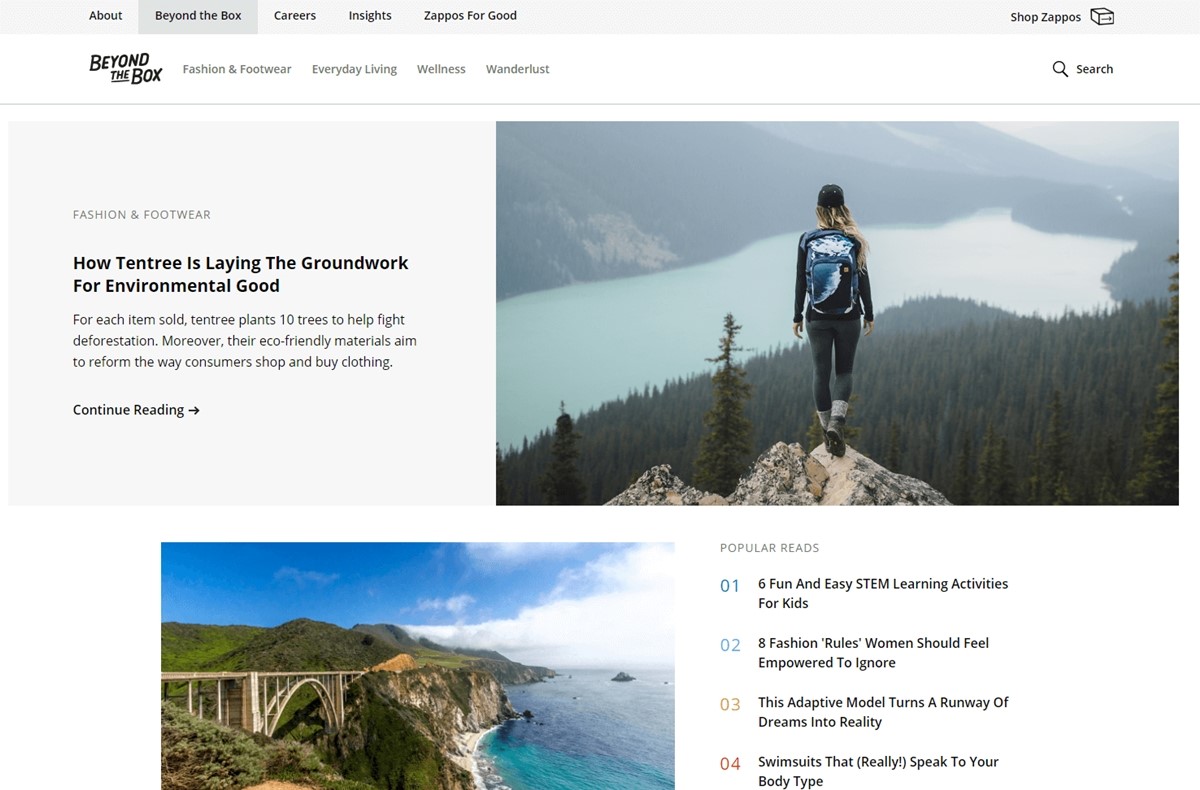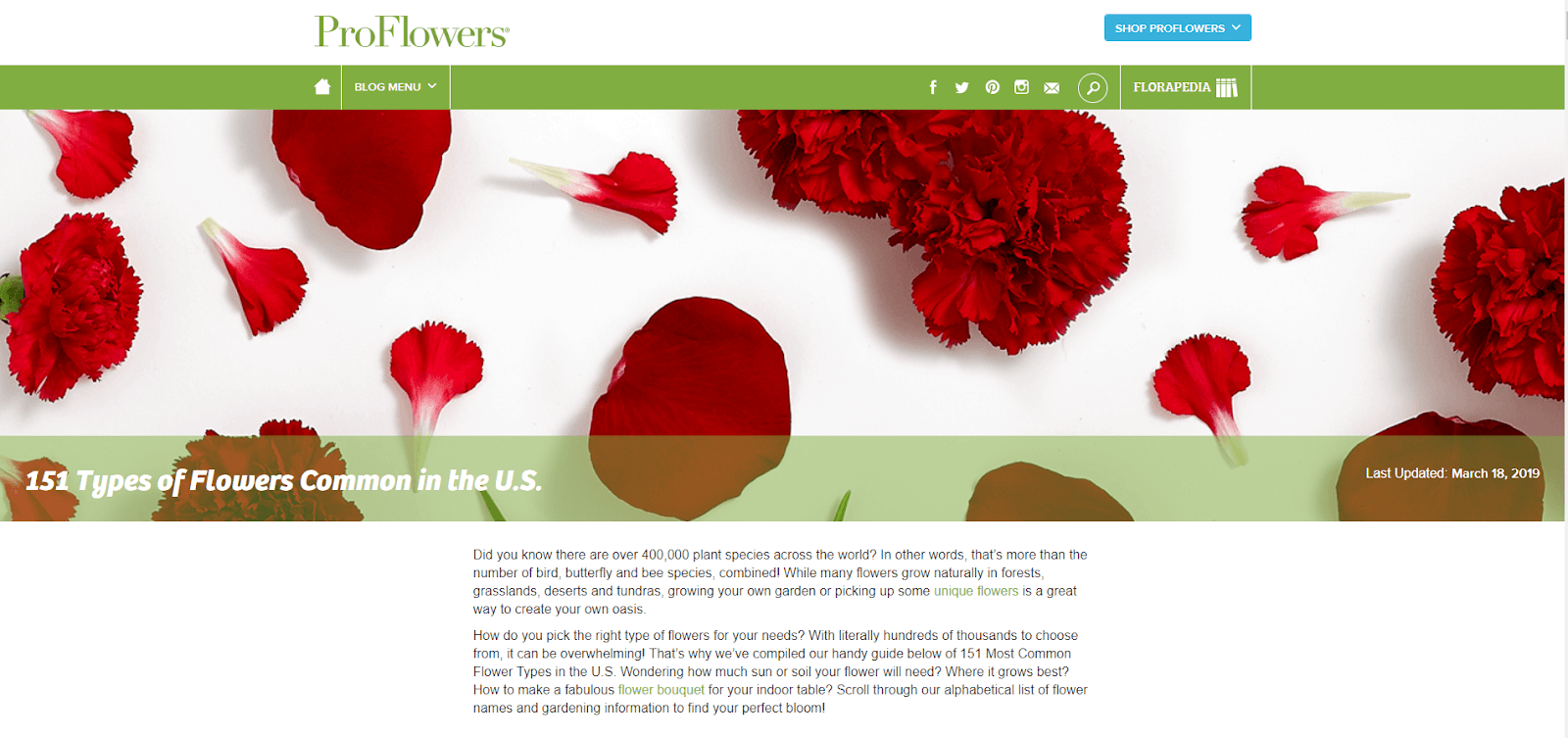The Secrets of Profitable E-commerce Content Marketing
You may have seen the term: “Content is king” all over the internet. Probably because it is true. Content marketing has been proven to drive traffic, create brand awareness, earn customer loyalty, and gain a competitive edge.
But the reality is, it is not easy to do content marketing well. Loads of e-commerce sites will put up a blog, write an update once in a while and call it a day.
But there is so much more in e-commerce content marketing that you can do. And it can be the step and stone for a steadily growing business if done right. With that in mind, let us introduce you to the king of online business: content marketing for e-commerce.
What is content marketing?

By definition, Content Marketing is the process of creating and distributing digital materials to directly or indirectly promote a brand, a product or a service. With your e-commerce store, content marketing is the “sweet spot” where your expertise meets the interests of your customers.
Rather than pitching products or services, content marketing provides information that entertains or informs your audience. The idea behind it is that if businesses consistently deliver valuable content without asking anything in return, readers will respond by becoming loyal customers.
In the world of spam emails and disruptive ads, content marketing seeks to provide consumers with valuable content - content that makes them stop, think, and take action.
So why is content marketing so valuable for e-commerce?
How content marketing helps e-commerce business

At the moment, over 500,000 active stores are running on Shopify, and they’ve collectively driven more than 40 billion worth of sales. And that is just Shopify. How do you stand out in a jungle of competitors that all want a piece of customers for themselves? That’s right, content marketing.
In general, content marketing is good at establishing your business’s position in the market. It can help to attract, engage, and retain customers. It builds a sense of reciprocity, so that consumers may become loyal, repeat purchasers. It moves shoppers along a complex buyer’s journey. It can lead to much better search engine rankings.
Customers don’t want to be just, well, customers anymore. They want connection, pride, satisfaction in buying a product. And content marketing provides them just that. Great content can deliver new visitors to you for many years to come.
And best of all, just like you want, it drives conversions. That’s the key to survive as an e-commerce shop.
Why you need a content marketing strategy
With all those values, you might want to jump right in and start writing a bunch of articles for your blog. But wait, first, you need something called a content marketing strategy.
Why? Because every business is different, and blogging is not everything in content marketing (it is not 2005 anymore). What works for one business won’t necessarily work for another. Content marketing campaigns will vary by industry as well.
Content marketing strategy is the set of steps you take to research, create, publish, and promote information that’s of value to your audience. Oftentimes, content marketers delegate blogging to freelancers or specialized services like Essay Writer Pro that handle blog posts or turn to advanced Paragraph Generator by Jenni AI, for all your writing projects, and articles for websites. It not only helps you do better than many competitors but also raises the quality of content, and filters out the best contents suitable for your business.
Julia McCoy from Content Marketing Institute notes that a solid content marketing strategy can generate three times more leads than paid advertising.
So spend a few days to think about your strategy. And our advice is don’t get too detailed since you can change it later, and focus on making an action-oriented plan, which will make you start way quicker than a 50 pages document of planning.
And don’t worry, we will guide you through the whole process of planning and strategizing in the next section.
E-commerce content marketing step by step
As an e-commerce business, your ultimate goal is to drive conversion. And that is your holy “why” when starting planning anything related to content marketing.
Let’s say you saw some information online about how many users are on Linkedin and how much the platform has been growing over the years. So you want to put all of your efforts into advertising there. Is it a good strategy? Probably not.
Especially when you run e-commerce business and most of your customers don’t find out about you on Linkedin. And there is no “why” in there.
That is why we made a three easy step process for you to follow and create your first good marketing strategy.
Step #1: Identify your target audience
I know this may sound simple, but you’d be surprised at how many people don’t know the answer to this question. Take a moment to see if you really know your target audience.

Here’s the thing. Your target audience needs to be crystal clear before every content marketing campaign. Otherwise, it won’t have a high success rate and lead to conversions.
Without knowing your target audience, you won’t know how to reach them.
- Age
- Gender
- Location
- Likes
- Dislikes
- Habits
These are just the basics that you need to know, at a minimum. Identifying the target market of your startup is a must. But your overall audience isn’t always the same for individual campaigns and strategies.
For example, let’s say your company sells sports equipment online. Your audience isn’t just “people who play sports.”
You can’t tailor your content around that because it’s way too broad. High school softball players aren’t the same as middle-aged male golfers.
Step #2: Learn their online habits
Remember, content marketing is all about distributing digital touchpoints online. That’s why it’s so important to figure out who your audience is. You need to know where these people live online. Otherwise, you won’t know how or where to distribute the right content.
Social media platforms like Instagram is a great way to distribute your content. Here’s a basic breakdown of social media usage based in 2019 on age from Convince & Convert.

There are tons of information online like this to learn more about online customers, but the key is to take out the key ingredient that matters to your business the most.
Based on this graph, you can see there are 76% of Snapchat users fall between the ages of 12 and 34. So if you’re targeting younger consumers, like Millennials or Generation Z, this might seem like the place to do it. Right?
In fact, 49% of Generation Z females say that they prefer to use Snapchat for sending videos of themselves. 43% of that same group says they prefer using Snapchat for posting selfies. They don’t use this platform to interact with brands.
However, 48% of Generation Z females say that Instagram is their preferred social media network for the following brands. Even though Snapchat has a greater marketing penetration of your target audience, it doesn’t matter if they’re not using that platform to interact with businesses online.
So do your homework and dig in to see the real habits of your customers. It will help a lot if you can put up a persona or journey of them (we will talk about this later).
Create and distribute content
Once you figure out what platforms are the best places to distribute content for your identified target audience, now you can start to create content.
If you start building the content before you go through the first two steps, you might be wasting your time creating content that people won’t end up seeing or using.
The type of content you create will also depend on who you’re targeting people based on their stage in the marketing funnel. The graphic below from Lucid Chart is a great resource to give you inspiration for content ideas.

A consumer who has never heard of your brand or e-commerce site will be targeted differently than a customer who knows what they’re looking for and is ready to make a purchase.
Breaking this entire process down into steps simplifies content marketing for e-commerce brands. Each stage serves a specific purpose in the customer’s journey, as should the content presented to the customer in those stages.
Checkpoints:
A lot of information has been given out and things can get a bit confusing. In order to help, we have gathered a checklist of what your e-commerce marketing strategy needs to consist of (minimum):
✅ Content Goals
Start with the end in mind. What is the engagement objective (e.g. buy your product, sign up to your email list, reach out to message…?) Define your content goals upfront so you can measure progress.
✅ Influencer List
You are going to need to identify influencers who can help you with promoting, sharings and backlinking.
✅ Buyer Persona(s)
A Buyer Persona is a fictional character who you will create and who encapsulates a potential buyer of your product or services. This covers characteristics like age, gender, salary, job, etc. as well as emotional triggers. This will helps you understand potential buyers so you can create content that directly responds to their needs. Do not limit to just one persona, there may be more for your products.
✅ Buyer Journey(s)
A Buyer’s Journey is the set of steps that a buyer goes through before they purchase a product or service. Typically it is 4 steps of Awareness - Evaluation - Conversion - Action and which touchpoints your business and your customers will meet at each step, with which types of content they will like.
✅ Content Calendar
You need to commit to content marketing for a while before seeing results. Make a schedule to keeps you on track.
✅ Content Distribution Plan
If links and shares form part of your Content Goals (and they should for some of your content), then you need to have a plan for distributing your content whether it is owned, earned or paid for.
✅ Content Repurposing Plan
Repurposing content means you don’t have to worry about creating new, original content all the time. It is a great way to breathe new life into your best content and also takes account of your visitors’ browsing habits, then presents it to them on a platform and in a format that they prefer like Slides, Videos, or Infographics, etc.
✅ Content Optimization Plan
Regardless of whether you are creating content for backlinks, shares or authority, every piece of content that you generate should be optimized.
Types of e-commerce content marketing
Great job reading so far! You must have learned a lot and ready to make some quality e-commerce content that your customers would really like. I am eager too, so let’s jump right in and see some more specific types of content you should be making.
Keep in mind, not all of these will be applicable for every campaign you run. The content will always vary and be based on who you’re targeting and the platforms you’re planning
Blogging

Easily the most convenient way to start distributing content, blogging requires little or no budget at all to start and it is very beneficial in terms of SEO.
As an e-commerce shop, you’re competing with dozens, hundreds, or even thousands of other brands across the web. You can’t rely on all of your customers going directly to your site to buy.
Blogging is the way you provide information, your own expertise, so your prospects can feel like you are the one to fix their problem. And that my friend, is a relationship that leads to sales numbers.
And you can also put links or CTAs right inside your blog post so readers can find your products easier, talk about convenience.
Related Articles:
Video content

Whether you’ve written a 10,000-word Definitive Guide or a 2,000-word blog, video is still a great way to deliver information, especially in this digital age.
Videos allow customers to learn more about your products, and they’re more engaging than text. If you sell a niche product, videos are a great way to demonstrate how to use the product and spell out various features and benefits.
It could be as quick and easy as using your webcam to shoot yourself talking or you can do a screen recording of your Slideshare presentation.
Now you’ve got extra channels to distribute to such as YouTube, Facebook, as well as some valuable extra content to add to your blog post.
Interactive content

One advantage of in-store shopping still has over the online experience is, in most cases, interactivity. Shopping in person can be a more engaging experience, and many still find it relatively fun.
E-commerce retailers can change up this dynamic – and you can stand out from your online competitors – by investing in interactive content. Yeah, future!
Take the cosmetics brand Sephora, which markets itself using the app Sephora Virtual Artist. Users can “apply” makeup to get an idea of what would look good on them. While the app isn’t a perfect substitute, it can help users decide if the colors are a good fit for them.

Interactive content isn’t limited to fashion brands. The never-ending love of personality quizzes, the usefulness of web apps and calculators, and the cool engagement with 3D videos are options for nearly any e-commerce brand with an appropriately creative marketing approach. This is how you stand out!
Original photos

Visual is an essential piece of content marketing now since 63% of social media is made of images. So it’s no longer a question of whether you bother to add visuals to your content it’s a must. And original photos means authentic feelings.
It’s up to you to ensure that you have tons of pictures of your products from nearly every imaginable angle. This is necessary for your product pages, but you can also repurpose those images on other channels as well.
For example, you can take an original photo of a model wearing the clothes that you’re selling and turn it into an Instagram shoppable post.
Include photos in your blogs. Add them to your email campaigns. Share them on other social media channels. Keep taking original photos because you’ll always be able to find a use for them.
However, if you don’t have much time, stock photos is not a bad option.
Product buying guides

Product buying guides are essential for the same reason as blogs. They can be used to drive organic traffic to your e-commerce site when people are looking for more information about specific products.
The biggest difference between product buying guides and blogging is that they will each target different types of people.
Blog posts are typically content that brings awareness since the consumer is still in the product and brand awareness stage. On the other hand, product buying guides are content that brings more detailed information as the consumer reaches the evaluation stage of the purchase process.
And also make sure that all of your buying guides have CTAs to drive conversions.
Email marketing

There are definitely ways that your e-commerce shop can leverage emails, just like any other business. It’s called email marketing. Any time someone makes a purchase on your website, you have the opportunity to send them a drip campaign that’s relevant to that order.
- Order confirmation
- Shipping notification
- Package delivered
- Follow up
These messages can notify abandoned carts, provide discounts codes, show product recommendations, or recap any blog post that your customer might have missed.
Email marketing stands tall as a low budget tool with great potential, and you have just the power of using all that.
Customer stories

There are lots of different formats you can use to tell a customer story.
- Reviews
- Testimonials
- Case studies
These can be in text format, image format, videos, or blog posts. Display them on your homepage. Create separate landing pages for customer stories. Share them on social media.
When checking previous customer satisfaction, the consumer is really close to converting. Customer stories can be the factor that drives them to complete the purchase process.
World-class examples of content marketing
With all the theory been handed out, it is still a long and hard process to get content marketing right. In fact, only a few e-commerce sites do it well to increase conversion drastically.
Nike
In 2018, Nike is the one making headlines with their killer e-commerce content. Their content has a goal, and that is to motivate people to go do great things, just like their tagline: Just Do It.
Your store needs to be known for a message it’s pushing, too. What content are you putting out to give your store a voice in this very crowded and noisy online world?
And in summer 2018, they released a campaign celebrating the 30th anniversary of Just Do It. They used Colin Kaepernick, an American footballer famous for making political statements on the field, as the face of their campaign. It shook America.
Nike sales grew 31% from Sunday through Tuesday over Labor Day this year (2018), besting 2017’s comparative 17% increase — according to research by Edison Trends. And this increase was directly related to the release of the video.

They went all-in for a controversial, bold, dangerous, yet fitting content for a time of division in America. They just had the right strategy to attract their target audience, and that is creating content their audience is passionate about — which in this case is political issues — and using that to push their brand story.
Lesson: Get your customer’s attention through content and topics they care about. And no, it is not the big-budget that makes success, it is the strategy.
Zappos

As one of the most successful companies in the world, Zappos already has a long reach. It’s no slouch in the content marketing department, though, and uses their blog to attract a huge audience.
You’ll notice that Zappos doesn’t just write articles about how to pick the perfect pair of shoes. Instead, the company covers a wide range of topics to appeal to its target audience.
From local color pieces to tips on travel, you’ll find tons of information on the Zappos blog. The e-commerce brand even writes about how to make your shoes and clothing last longer, which seems counterintuitive, but the information is endearing and fosters customer trust.
Lesson: Your blog can be more than just your own products, it can be a place for people to solve more problems in their real lives.
ProFlowers

If you want an over-the-top example of content marketing it’s this.
Proflowers created a list of 151 Types of Flowers, complete with images, seasons, zones, and more. It’s quite the doozy but it stands head and shoulders above similar content.
The result?
Not only does it generate over 17,000 visits a month in organic traffic, but it’s attracted 49 linking root domains.
Overall, Proflowers pulls in a whopping 42% of organic traffic to their blog and content posts. This is huge, and quite surprising given the size of Proflowers already.
Top-of-funnel content marketing is a great fit for Proflowers since virtually everyone will need to buy flowers for their special someone at some point in the next year.
It’s a form of content marketing and branding combined, which works well in the B2C mass-market.
Lesson: Sometimes it is good to go the extra miles and deliver super detailed information to your customer, like a pro.
ASOS

UK-based ASOS is a global fashion retailer that sells exclusively online, targeting the millennial market.
Where ASOS really stands out is in their use of influencer marketing strategy and user-generated content. Their ongoing “ASOS Insiders” campaign shows influencers worldwide promoting ASOS products and looks on their own platforms. The content is then cross-promoted on ASOS’s site with direct buy links to products.
ASOS also encourages non-influencers to share their ASOS buys using the Instagram hashtag #ASSEENONME, which has over 1M shares.

Their influencer and user-generated (UGC) content extend beyond traditional social media platforms to YouTube. ASOS video content ranges from “haul” videos with style influencers and ASOS fans to inspirational documentaries with young activists. This allows the brand to tap into millennials’ ethics-driven consumerism while still involving their influencers.
Plus, 40% of YouTube visitors use the platform to learn more about a product before they buy it, according to Think with Google, making it a revenue-friendly channel for the fashion brand.
Both influencer and UGC create a network effect for ASOS’s content marketing, extending the reach and brand awareness among target shopping demographics at a relatively low-cost for the brand.
Lesson: The young generation has a need to show their colors on social media, so if business encourages them right can attract millions of potential customers.
Closing advice
E-commerce businesses need to go the extra mile to ensure their content is engaging and interactive, enabling them to establish their authority, increase their conversion rates and drive traffic on an ongoing basis.
But there isn’t a one-size-fits-all e-commerce content marketing strategy - you need to understand your target audience and develop a content plan based on that knowledge. With the detailed guide above, you can start making your own content strategy and build trust with your audience.
Wish you all the success with your e-commerce content marketing road ahead, and please let us know in the comment section if you have any question.
New Posts







